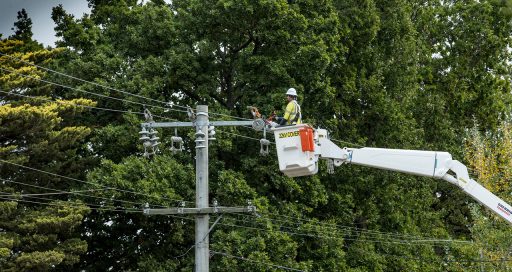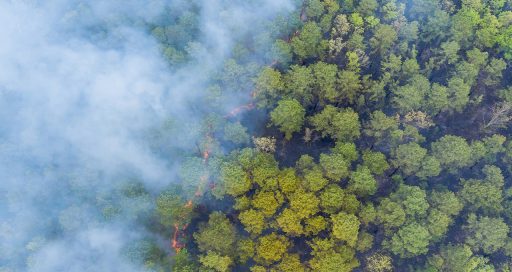To help prevent wildfires started by powerlines, Axians Portugal collaborated with a Distribution System Operator – DSO to develop a very-high-precision system to detect and eliminate highly resistive short circuits.

The all-time-high number of fires worldwide in a single day – about 187,114 –was reached on Sunday 8 August 2021. This sad record, recorded by a NASA satellite and stretching across every continent, has caused a spike in carbon dioxide emissions due to wildfires. These release 5 to 30 tonnes of carbon per hectare depending on the intensity of the fire and the fuel they burn (1).
Preventing them involves action at every level. In Portugal, a country that has had a particularly high number of extensive wildfires, a DSO has decided to take a proactive and preventive approach on several fronts, which include detecting and eliminating highly resistive short circuits that occur when tree branches touch medium-voltage overhead powerlines, which may happen permanently or intermittently (due to the wind).
According to studies in European Union countries, about 1% of all forest fires are related to overhead lines.
Some tree species near lines can grow very fast. So it is impossible to guarantee that vegetation remains at a safe distance over long periods of time. According to studies in European Union countries, about 1% of all forest fires are related to overhead lines.
“This type of incident causes very low short circuit currents, which conventional protection systems at substations have trouble detecting,” explains Luis Pereira, a Business Unit Manager at Axians Portugal, who was asked by a DSO to collaborate in finding a solution to this problem.
“We had to find a way to collect raw data with a high level of precision at the substations, then run advanced analytics to turn that data into useful information enabling us to avoid the potential ignition of fires in the course of highly resistive short circuits,” Luis Pereira adds.

A standard and interoperable solution
Axians’ job, in other words, was to complement existing residual current protection systems installed at substations with an additional system capable of picking up the kind of described issue and disconnect the line where the fault is located.
“Two algorithms designed by the DSO were implemented to deal with two types of phenomena: scenarios occurring as a result of permanent contact with tree branches and scenarios occurring as a result of intermittent contact,” the Axians Portugal manager continues. This solution collects data in real time via high-precision, purpose-engineered current transducers.
After successfully completing the POC in six substations in 2019, the DSO decided to start rolling out Axians’ solution, SDDR, at the end of 2021. VINCI Energies’ ICT brand thus created a standard system that is interoperable with any type of protection system or technology used in a substation.
“Thanks to a very simple web-based man-machine interface, the system configuration can be tailored to any type of substation, to the number of medium-voltage lines, etc.,” says Luis Pereira, who adds, “A central database stores the information collected from each substation to assess the algorithm’s performance and enable improvements going forward.” This way, Axians Portugal enables customers providing public services with an option to prevent wildfires and thereby reduce carbon emissions.
This system is an example of VINCI Energies’ commitment towards sustainability and decarbonisation initiatives, proving the efforts of the brand to integrate this philosophy into its value proposition.
*Future Directions International – Johns, Christopher. Strategic Analysis Paper, Wildfires, Greenhouse Gas Emissions and Climate Change. 24/09/2020
05/21/2024




